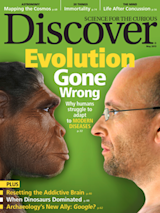To investigate how life reacts to a nearly complete lack of radiation, astrophysicists and biologists have turned to, of all places, the same deep underground tunnels that house radioactive waste. It turns out that the thousands of feet of solid salt deposits and clay designed to protect against radiation leaks also protect the caverns from the background radiation constantly hitting Earth’s surface.
That means New Mexico State University microbiologist Geoffrey Battle Smith has spent most summers commuting to work in a bumpy, 500-feet-a-minute elevator down a 2,150-foot mine shaft in the desert outside Carlsbad, N.M. Inside a tunnel, formally known as a drift, Smith incubates bacteria and mammalian cells in a steel vault the size of a garden shed.
Data from his experiments suggest the absence of background levels of radiation causes a stress response and inhibits microbial growth, challenging nuclear safety protocols that consider no radiation the only safe ...















